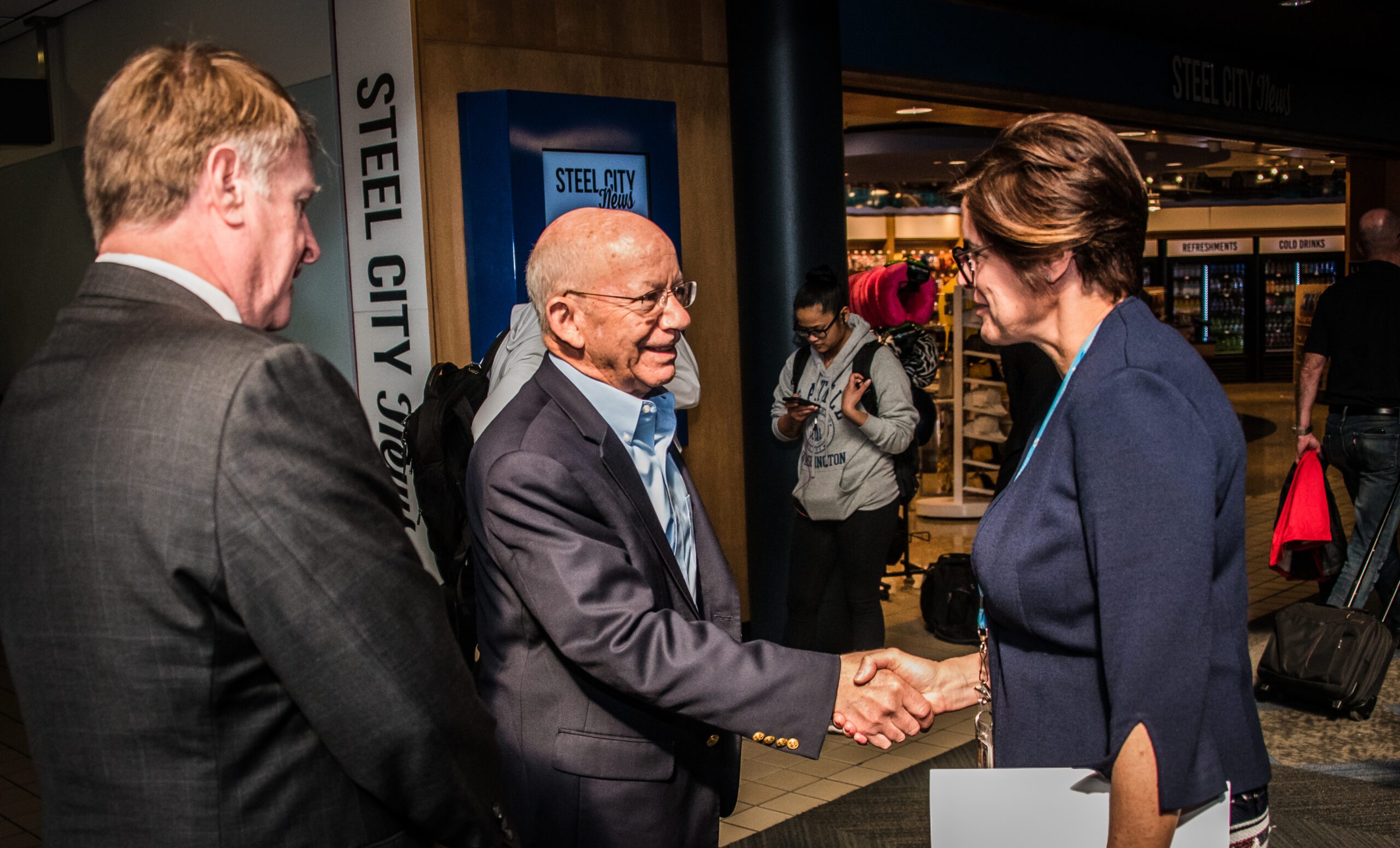Infrastructure Spending Long Overdue, DeFazio Says
U.S. House Transportation & Infrastructure chairman tours PIT; calls for national rebuilding plan, including airports
By Bob Kerlik
Published May 13, 2019
Read Time: 4 mins
U.S. Rep. Peter DeFazio, D-Oregon, chairman of the U.S. House Transportation & Infrastructure Committee, visited Pittsburgh last week. After a tour of Pittsburgh International Airport. DeFazio sat down with Blue Sky to talk about a potential national infrastructure rebuilding plan, an increase in the national Passenger Facility Charge for airports (capped at $4.50 per ticket since 2000), his impression of Pittsburgh’s airport, and his latest meeting with President Donald Trump.
Q: How do you see airports fitting into infrastructure spending in the country?
A: More than 10 percent of the U.S. economy is dependent upon the busiest, most efficient air system in the world. Obviously the airports are key both for passenger travel and for movement of high-value cargo so airports are, I think, a key part of our 21st Century Infrastructure investment.
Q: How do you view the state of the nation’s airports?
A: It’s variable. There’s some places where the airlines are willing to put in a lot of money – LA or other major hubs. A lot of mid-size and smaller airports are struggling to meet their passenger demand, their landside needs and that’s why I am strongly supporting a Passenger Facility Charge so our airports can do self-help. It’s also ultimately going to save money because if the airports have to borrow for a 30-year term with no increase in the PFC they’re going to incur larger interest costs which is essentially wasted money because they have other needs that they could have met by spending that on capital as opposed to interest. I don’t quite understand the airlines’ opposition because they are going to have to pay one way or another. They’re either going to pay higher and longer-term fees at the airport, or we can do the most efficient way possible which is a Passenger Facility Charge user fee on the individual customers.
Q: Where do you see that passenger charge going in the next couple of years?
A: I’ve raised the issue and I’m engaging in discussion and thus far the airlines are adamantly, unequivocally opposed. (They) claim they would work with any airport and do anything they wanted, and apparently here, your airport has developed one of the best relationships with the industry by showing this is an incredibly cost-effective place and you’re not wasting money on things that are nice to do, but then again I don’t think most airports are doing that. But here, your director and the staff have done an excellent job in dealing with the airlines. If we can replicate that elsewhere maybe we wouldn’t have this problem.
Q: What’s your impression of what you heard about the Pittsburgh airport in general and the terminal modernization project happening here?
A: You’ve been de-hubbed. You are in a unique category: someone who used to be a transit point for millions of passengers. Now you’re an origin-and-destination airport, which is a whole different category and the transition was very difficult. But I think now you’re on a very positive path. I think the Modernization Plan makes a tremendous amount of sense long-term. It’s going to provide a much nicer facility and it’s going to save money not having to maintain a half-mile long (train), not having to maintain eight miles of baggage conveyors that don’t communicate with one another. These are unique and difficult problems. I think they’ve come up with an innovative solution and I really like the idea that the airport is going to create its own energy.
Q: What are your top goals as chairman of the T&I committee?
A: To get the president and the Congress to recognize the pressing need for investment in the nation’s infrastructure that is long overdue from all modes, all elements. In this case we’re talking about airports but also our roads, bridges, highways and transit systems are in need of massive rebuilding, reinvestment. We have to build in resilience to deal with the changes in the climate and the frequency of extreme weather events. We need to be ready on surface transportation to accommodate alternate modes, probably electrification. But we also have to deal with our harbors and waste water and drinking water and broadband. The needs are phenomenal but we’re falling behind the rest of the world. We need to invest here at home and catch up and surpass, yet again, the rest of world with our facilities and services.
Q: How did the meeting last week on infrastructure go with the President?
A: There was optimism that we could work something out. There was a little reluctance on who’s going to go first on revenues. I just suggested that we all just meet and put pieces of paper on the table with no attribution, sort through them and figure out what’s the best way to pay for this and then walk out together so nobody gets political advantage or disadvantage. We’re having a little trouble on the Senate side but we’ll see if we can work that out.
Watch
This Next
Read
This Next






